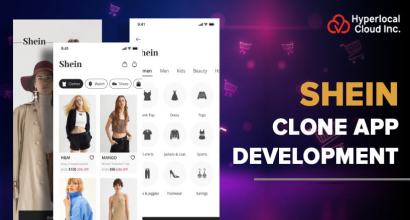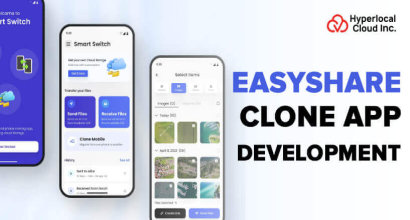Many people now prioritize mental health in our society. Attention and mindfulness are becoming more and more popular as strategies to overcome stress, anxiety, and other mental health problems. With the attention applications that play an essential role in this change, the global wellness market is expanding. It is estimated that this business will continue to grow, and by 2026, the demand for meditation apps will exceed $20 billion.
However, the company can easily adapt the white label meditation app with its own logo, color straps, and materials, making a great alternative for companies looking at the expansion of the wellness market.
What is a White Label Meditation App?
A white label meditation application typically offers users guided health and wellness sessions, exercises, and techniques of relaxation. This will help users reduce their stress, depression, or anxiety. It is a pre-built customized platform that enables companies to provide meditation services under their own brand without developing the app from scratch. This will, however, allow businesses to concentrate on targeting their intended audience, developing their business strategy, and contributing their own content.
Start Your Own Meditation Journey Today
Why invest in a White Label Meditation App?
Businesses wishing to get into the wellness market might benefit from investing in a white-label meditation app in several ways.
1. Cost Efficiency
It might be expensive to create a custom meditation software from the ground up. It entails recruiting a development team, testing, and meeting additional development costs. These expenses are greatly decreased by a white-label solution, which provides a pre-made app that can be altered at a much lower cost.
2. Faster Time-to-Market
It can take months or even years to develop an app. White-label apps allow companies to launch swiftly. Businesses may now concentrate on branding, content, and marketing because the development work has already been completed. Businesses may get a competitive advantage from this quick deployment.
3. Lower Risk
By choosing a white label meditation app, you can use an installed and tested platform. White label apps are less likely to fail than scratch apps, as they can better withstand unexpected problems. Because the supplier has tested, adjusted, and improved the app, the company will have minor technical issues.
4. Scalability
Scalability is a priority when developing web applications. You will not be worried about growing out of the capacity as your user base grows. Proficient success depends on the platform's ability to support high user volumes without compromising performance.
5. Focus on Branding and Marketing
Companies do not have to worry about the technical parts of the app construction when using white label solutions. They can now try more for user engagement, material production, and branding. Without forcing development problems, businesses can test different marketing techniques to increase the user base.
Core Features of a Meditation App?
A meditation app needs to have a few essential elements that improve user experience and add value for users to be successful. Businesses will be better able to draw in and keep users with these features.
1. Guided Meditation Sessions
The primary function of any meditation app is guided meditation. Users can practice mindfulness, relaxation, and focus with the aid of these audio or video sessions. Numerous sessions that can address various aspects of mental health, including stress reduction, anxiety relief, sleep improvement, and attention enhancement, are the main aspect of meditation applications.
2. Customizable Session Length
Everyone has another schedule. Although some users may prefer a long-lasting attention session that lasts thirty minutes or more, others may have only five minutes to focus. Giving users the ability to change the duration of their sessions allows them to take responsibility for their practice, which increases its convenience and adaptation capacity.
3. Progress Tracking
People like to monitor their own development. Users of a meditation app can celebrate their performance, monitor their attention, and review their lines. Users can develop a habit of regular focus by monitoring their progress, which inspires and incorporates them.
4. High-Quality Audio & Visual Content
Providing an attractive experience requires high-quality sound for meditation apps. Clear and cool natural sounds, background music, and guided voice instructions are all necessary. Meditation experience can also be improved and made more interesting by adding visual components such as soothing images or animations.
5. Push Notifications
Users can be reminded of meditation, informed of new materials, or motivated to maintain their attention lines using push notifications. It is more likely that users who receive a reminder in time will join and live with a routine of attention.
6. Multi-Device Synchronization
When it comes to reaching their attention sessions, users prefer flexibility. Users can use a computer, laptop, tablet, and smartphone to sync content across multiple devices. Users should be able to continue practicing on different devices, whether at home or when they are away.
Advanced Features of a Meditation App
Companies can incorporate more sophisticated features to differentiate their meditation app and deliver a premium experience to customers.
1. Personalized Meditation Plans
By providing information to the user's goals, a customized attention program can improve the user experience. Individual programs provide a more meaningful and personal passage regardless of the goal, lack of stress, better sleep, or an increase in productivity.
2. AI-Powered Recommendations
To suggest special materials, AI can check user behavior, preferences, and routines. For example, if a user often listens to attention sessions that reduce anxiety, the app may recommend more sessions in the category, which increases the user's connection and happiness.
3. Live Sessions & Webinars
The feature of webinars introduces real-time engagement, community spirit, and live meditation sessions. Companies can explore mental health, and meditation can offer live Q&A sessions with experts, or groups can simply pay attention. These live events provide a more attractive experience and can be quite attractive to users.
4. Community Features
Although meditation can frequently feel lonely, adding community elements like social sharing, group challenges, and discussion forums can help users feel more included. Connecting with people who have similar interests allows users to set challenges together and even encourages one another to continue practicing meditation regularly.
5. Subscription Models
Providing access to the subscriber's premium content is a way for a company to make money from the white label fitness app or meditation app. More material, personal coaching, or more complex sessions may be available for premium members. A comprehensive audience can be prepared by offering more price levels, such as an independent and a paid version.
6. Offline Access
Internet use may not always be available to some users. Users can download the sessions and access them offline without the need for an active internet connection, thanks to this feature. Those who like to meditate while walking or traveling will find this very useful.
7. Wearable Device Integration
Physical parameters such as heart rate, sleep habits, and stress levels can be traced through integration with Apple Watch or Fitbit Techniques. The user experience can be seen using this information, which can also help them achieve as much of the attention sessions as possible.
8. Integration with Other Wellness Apps
Many people already use other training or health applications, and welfare is a broad effort. Users can track the entire welfare journey in one place by integrating with well-known applications such as Google Fit, MyFitnesspal, or Strava, which can make the experience more comfortable.
Want to Offer Meditation Under Your Brand?
Steps to Build a Meditation App
Creating a meditation app involves several essential steps to ensure that the final product is not only functional but also combined with brand recognition and user expectations. At the same time, the main features are already implemented in the app, including customization and material integration, and it is crucial to ensure a seamless user experience.
Below are the most important stages involved in creating an app.
1. Define Your Business Objectives and Target Audience
Before you dive into customizing the meditation app, you can clearly define your business goals and identify your target groups. Defining these items will guide the customization and will help you design the app to cater to the right audience.
2. Choose a White-Label Platform Provider
It is important to choose the correct white -label app provider, as not all suppliers offer the same level of customization or facilities. Think of the following:
- Reputation
- Customization Options
- App Features
- Technical Support
- Cost-effectiveness
However, startups or well-established businesses can choose a reliable and secure company that provides them with advanced white label app solutions.
3. Customize the App for Your Brand
The white-label meditation app's essential features are already available. The exciting part starts now: personalizing it to represent your company. This comprises:
- Branding
- Color Scheme and Design
- Typography
- UI/UX Customization
- Accessible features
- Content Integration
4. Test the App Before Launch
The test is an important step to ensure that your app works as expected. You must do many types of tests:
Functionality Testing: Make sure all functions, including material streaming, push notifications, progress tracking, and the login system, work evenly.
Usability Testing: Check that the user interface is intuitive and that users can easily navigate through the app. Conduct the user experience test by interacting with a group of target users.
Device Testing: Since users use the app from different devices, you need to test the app on both iOS and Android devices, and ensure that it runs equally on smartphones and tablets.
Performance Testing: Under heavy traffic conditions, make sure the app works well with a large number of users.
5. Launch the App
It's time to launch the app after thorough testing and individual verification. Before launching, remember the essential factors. Make sure the graphics, details, and keywords of the app are optimized for apps like the Apple App Store and Google Play. High-quality images and understandable, captivating details will attract users.
6. Post-Launch Updates and Maintenance
The first step is to launch your meditation app. To keep the users busy, you must continuously provide new features, materials, and promotions to the app. Post-launch is among the items in maintenance:
New Content: To keep people interested, continually add fresh audio tracks, guided meditations, and relaxation methods.
Bug Fixes and Performance Updates: Regular errors or performance problems in response to the user's request.
Analytics and Optimization: App analysis can be used to monitor user activity, to find popular materials, and to increase the functionality of the app.
How Much Does It Cost to Build a White Label Meditation App?
The intricacy of the app and the services it offers determine how much it costs to develop a white-label meditation app. However, a basic white-label meditation app might cost businesses anything from $5,000 to $20,000. Being a reputed on-demand app development company, Hyperlocal Cloud provides budget-friendly white label solutions to startups. However, the final cost will be determined by:
Customization Requirements: The cost increases with the number of features and branding adjustments needed.
App Platform: The cost of developing for both iOS and Android will increase.
Additional Features: The total cost may increase with advanced features like wearable device integration, AI, or live sessions.
Launch Your Meditation Platform Quickly
Revenue Model Of A Meditation App
There are numerous ways that enable a meditation app to generate revenue for your business. Some of the essential strategies are discussed below. Have a look:
1. Subscription-Based Model
Admins can offer users the option to join with monthly or annual fees, providing access to exclusive materials, functions, and premium attention sessions. A freemium model can work well, where basic features are available for free, while premium features are locked behind a paywall.
2. In-App Purchases
Allow users to buy individual attention sessions, soundtracks, or exclusive materials. This allows users to pay whatever they want, making it a good revenue stream, especially for those seeking specific sessions.
3. Ad Revenue
For companies offering a free app version, integrating ads can generate passive income. Showing advertising, video ads, or sponsored material can help users who do not pay for the premium version.
4. Affiliate Marketing
Partners with companies that sell wellness products, such as meditation pillows, yoga mats, or essential oils. Companies can serve a commission for each sale generated through the app, market these products in the app, and use associated links.
Why Choose Hyperlocal Cloud White Label Meditation App?
For companies that are looking to develop a scalable and seamless meditation app, Hyperlocal Cloud provides an excellent white-label meditation app solution with several significant benefits. Hyperlocal Cloud is one of the leading custom software development companies that ensures that your app is built on a solid, scalable, and secure platform, with our tech experts' support for development and success.
Understand what we offer:
1. Customization
With the high degree of customization offered by Hyperlocal Cloud, you may modify the app's content, appearance, and branding to precisely match your own brand.
2. Scalability
The infrastructure of Hyperlocal Cloud guarantees that the application can manage growing traffic without sacrificing functionality as your user base expands.
3. Technical Expertise
During growth and initial stages, Hyperlocal Cloud provides professional help, guarantees uninterrupted integration, and answers technical problems.
4. User-Centric Design
Their emphasis on developing apps that are easy to use ensures that your users will have an enjoyable meditation experience from the start.



